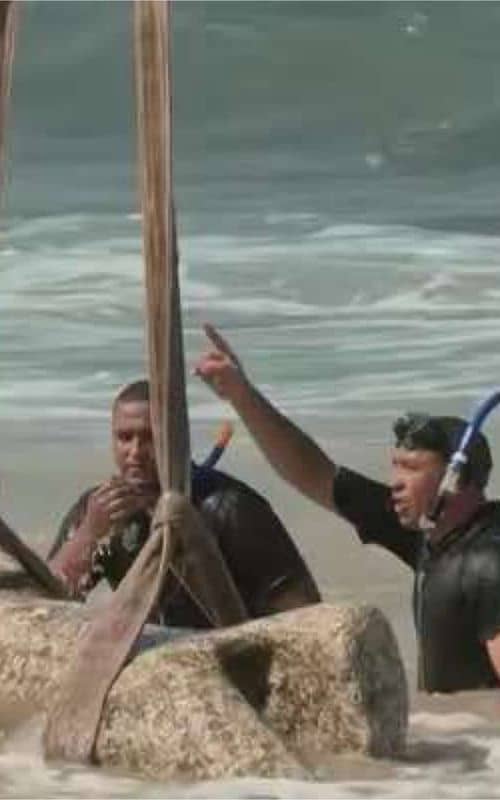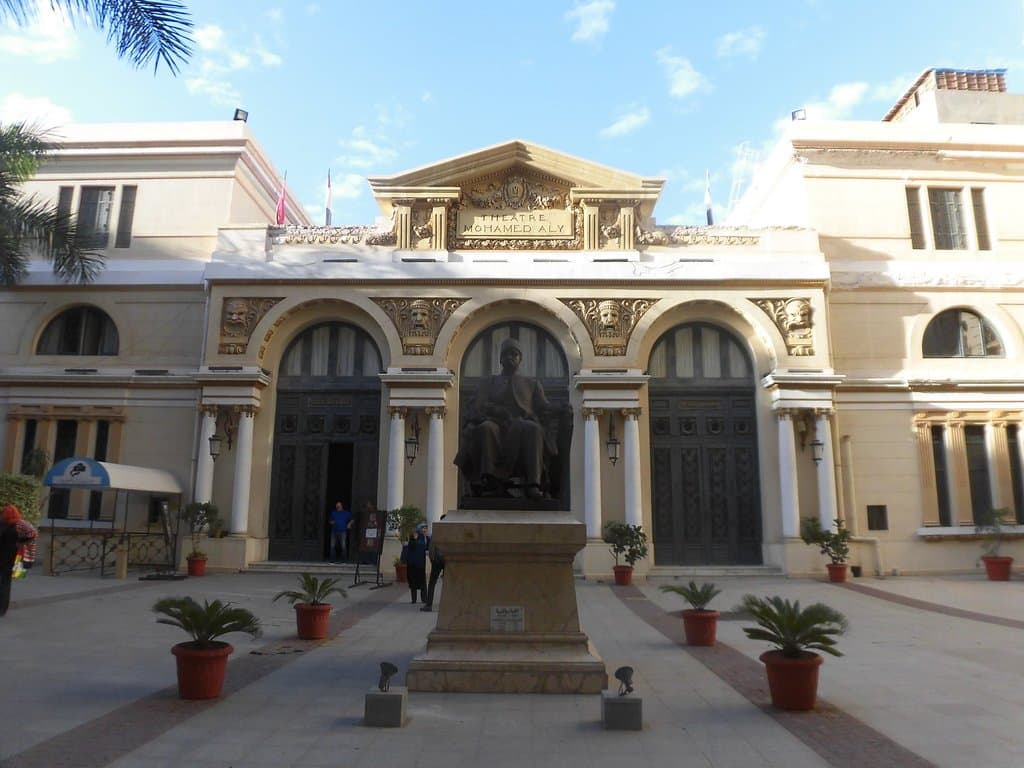Abu Mena Archaeological Site Egypt
Explore the ancient pilgrimage center of Abu Mena, a UNESCO World Heritage site in Egypt, once a bustling hub for early Christian devotion and healing...
Highlights
Must-see attractions

Social
From TikTok & Reddit
Best Time
Beat the heat and crowds
Abu Mena Archaeological Site Egypt
Best Time
Beat the heat and crowds
Highlights
Must-see attractions
Explore the ancient pilgrimage center of Abu Mena, a UNESCO World Heritage site in Egypt, once a bustling hub for early Christian devotion and healing.
"A significant historical site with a profound spiritual aura, though preparation for the elements is key."
☀️ Stay Hydrated!
Bring ample water; there are no facilities on-site. The walk can be long with no shade.
👟 Wear Comfortable Shoes
The terrain is uneven and sandy. Sturdy walking shoes are a must for exploring the ruins.
Highlights
Discover the most iconic attractions and experiences
The Basilica Foundations
Main Church Area
Explore the vast foundations of the ancient basilica, revealing its impressive scale and multiple construction phases.
Pilgrim Flasks and Crypt
Underground Crypt Area
Discover the sacred crypt where St. Menas was buried, and imagine the thousands of pilgrim flasks found here.
Monastery of Saint Mina
Near the Main Gate
Visit the active monastery adjacent to the ruins, where a monk may share insights into the site's history.
Plans like a pro.
Thinks like you
Planning Your Visit
Prepare for the Sun and Sand
Understand the Site's Significance
Best Times
Insider Tips
from TikTok, Instagram & Reddit
☀️ Stay Hydrated!
Bring ample water; there are no facilities on-site. The walk can be long with no shade.
👟 Wear Comfortable Shoes
The terrain is uneven and sandy. Sturdy walking shoes are a must for exploring the ruins.
🚶 Follow the Signs
Signs guide you to the main areas. Consider the shortcut if you're short on time.
📚 Read the Explanations
Guides may have limited English. Explanation boards offer valuable historical context.
Tips
from all over the internet
☀️ Stay Hydrated!
Bring ample water; there are no facilities on-site. The walk can be long with no shade.
👟 Wear Comfortable Shoes
The terrain is uneven and sandy. Sturdy walking shoes are a must for exploring the ruins.
🚶 Follow the Signs
Signs guide you to the main areas. Consider the shortcut if you're short on time.
📚 Read the Explanations
Guides may have limited English. Explanation boards offer valuable historical context.
🙏 Visit the Monastery
A kind monk might be present to share the history of the church.
What Travellers Say
Reviews Summary
Visitors find Abu Mena to be a historically significant site, particularly its connection to early Christianity and pilgrimage. The ruins, though sparse, offer a glimpse into a once-thriving center. The adjacent monastery and the stories of St. Menas are often highlighted as points of interest. However, the lack of shade, limited facilities, and the need for significant walking are common drawbacks.
"If you go to the right in front of the main gate of Monastery of Saint Mina, you will find a sign that will guide you. The walk is about 1.5-3km* and there is no shade along the way, so be careful not to get heat stroke.
*There are actually two routes. Usually follow the arrow, the shortcut is to go straight at the right turn information board at the beginning.
The Heritage will be accompanied by a simple free guide. Since they can hardly speak English, they are urged by the guide to read the explanation boards everywhere and get in touch with the heritage.
The ruins are small and the guide takes less than 10 minutes.
There are very few extant ruins.
Because Recent agricultural activity in the area has significantly raised the water table, resulting in the collapse or destabilization of many buildings on the site."
Daisuke Sato
"The underground crypt where St. Menas was buried emits a measurable 0.8Hz infrasound wave that induces meditative states. Archaeologists found 5th-century clay pilgrim flasks still containing traces of healing oil. The ruined basilica's foundations reveal 7 distinct construction phases visible in the brickwork patterns."
Arman Khachatryan
"A nice, kind Monk was around us explaining the history of the church"
addcareltd
What People Like
What People Dislike
Frequently Asked Questions
🚇 🗺️ Getting There
Abu Mena is located southwest of Alexandria. Many visitors access it as part of a tour from Alexandria or Cairo. If traveling independently, a taxi or private car is the most convenient option. Public transport can be challenging due to the site's remote location.
Public transport to Abu Mena is not straightforward. It's best to arrange a taxi or join an organized tour for easier access.
For convenience and ease, hiring a taxi or booking a guided tour is highly recommended. This avoids the complexities of local transport.
Abu Mena is approximately 45-50 kilometers southwest of Alexandria, making it a feasible day trip.
There are no transportation options within the archaeological site itself. You will be walking between the different areas.
🎫 🎫 Tickets & Entry
Entry to the archaeological site itself is generally free, but it's always a good idea to check for any recent changes or specific entry requirements.
The archaeological site is typically open during daylight hours. However, it's advisable to confirm the exact opening times before your visit, especially if you plan to visit the adjacent Monastery of Saint Mina.
While the ruins are often accessible without a fee, the adjacent Monastery of Saint Mina may have its own visitor guidelines.
Yes, you can visit Abu Mena without a guide. However, the site has limited signage, and explanation boards are crucial for understanding its history.
While official guided tours might be limited, local guides or monks at the adjacent monastery may offer insights into the site's history.
🎫 🧭 Onsite Experience
You can explore the foundations of the ancient basilica, the sacred crypt where St. Menas was buried, and remnants of the pilgrimage complex. The adjacent Monastery of Saint Mina is also a point of interest.
A visit to Abu Mena can take anywhere from 1 to 2 hours, depending on your interest in exploring the ruins and reading the explanation boards.
Abu Mena is an open-air site with uneven terrain, so it requires supervision for young children. The historical significance might be more engaging for older children.
Lightweight, breathable clothing is recommended due to the heat. Comfortable walking shoes are essential for navigating the site.
Facilities are very limited at the archaeological site itself. It's crucial to bring your own water and use restrooms before arriving or at the nearby monastery.
📸 📸 Photography
The basilica foundations offer a sense of scale, and the crypt area can be atmospheric. The surrounding desert landscape also provides photographic opportunities.
Photography is generally allowed at the archaeological site. However, always be respectful of any religious areas within the Monastery of Saint Mina.
Early morning or late afternoon offers softer light and fewer harsh shadows, making for more appealing photographs.
Drone usage is typically restricted at archaeological sites and near religious institutions. It's best to check local regulations before attempting to fly a drone.
While general photography might be permitted, it's always wise to be discreet and respectful within active religious sites. Ask for permission if unsure.
For Different Travelers
Tailored advice for your travel style
👨👩👧 Families with Kids
Focus on the stories of Saint Menas and the pilgrims who visited. The discovery of ancient pilgrim flasks can spark imagination. Visiting the active Monastery of Saint Mina can also provide a different perspective on the site's enduring religious significance.
🚶 Solo Travelers & Budget Explorers
Bring your own provisions, as on-site amenities are minimal. The free explanation boards are your primary guide, so take your time to read them. The site's historical depth and the potential for quiet contemplation make it a rewarding experience for independent visitors.
Deep Dives
In-depth insights and expert knowledge
The Sacred History of Abu Mena
The archaeological evidence reveals a complex urban center that grew around the saint's tomb. This included a grand basilica, baths, hostels for pilgrims, and workshops. The site's prosperity is a testament to the enduring power of religious devotion and the economic impact of pilgrimage routes in the ancient world. The discovery of the underground crypt, said to contain the saint's remains, is central to understanding the site's sacred significance.
Recent agricultural activity has unfortunately impacted the site, raising the water table and causing some structural instability. Despite these challenges, the ongoing archaeological work continues to uncover layers of history, offering glimpses into the lives of those who visited and lived at this important religious center. The site's UNESCO World Heritage status underscores its global historical and cultural value.
Navigating Abu Mena: Practicalities and Tips
Comfortable walking shoes are a must, as the terrain is uneven and sandy. While the ruins themselves are not extensive, the historical context provided by the explanation boards is invaluable. Guides may be available, but their English proficiency can vary, making the written explanations a reliable source of information.
Consider visiting the adjacent Monastery of Saint Mina, where a monk might be present to share historical insights. This offers a blend of ancient history and contemporary religious life. Remember that facilities are scarce, so plan accordingly for restrooms and refreshments.



Social
from TikTok, Instagram & Reddit